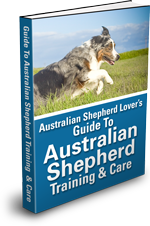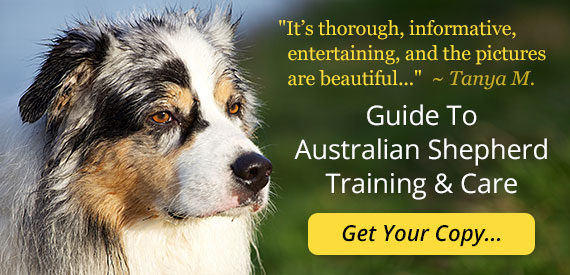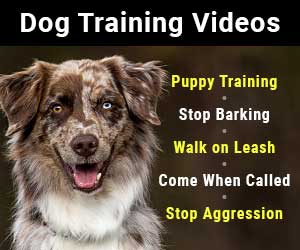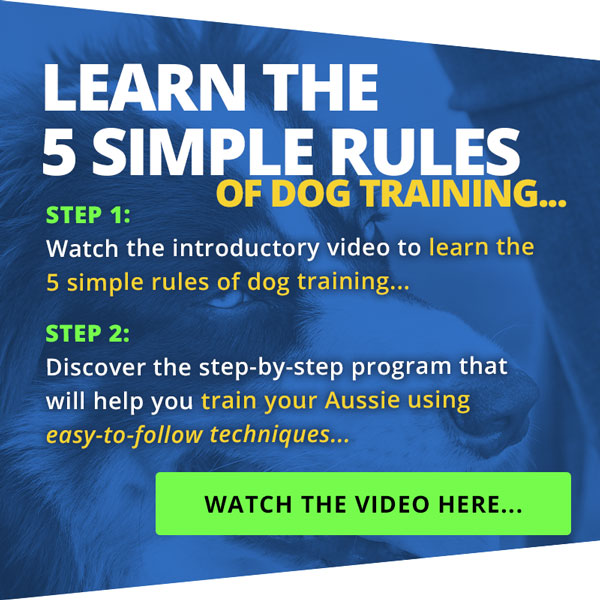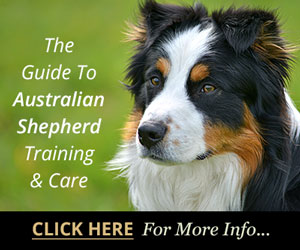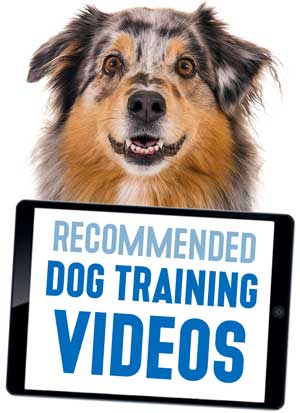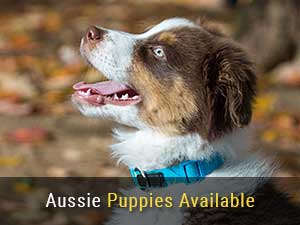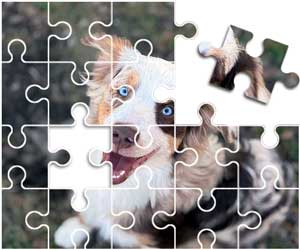
A Positive Dog Training Approach Works Best With Australian Shepherds
If you have an older Australian Shepherd who is attempting a coup and seems to be trying to boss you around, you can also assert yourself, using a positive dog training approach. Providing guidance for your Australian Shepherd and laying the groundwork for obedience is essential to avoid (or deal with) this situation.
Levi tried this when he was about two years old. He was actually getting to be quite aggressive toward me. He recognized my wife as the leader of the pack (you married guys know what I'm talking about) ;-) and Levi thought he could knock me out of second place!
Even though Levi was getting aggressive to the point of growling and snapping I knew this was not his fault and that it was due to something we were doing wrong. This situation, however, was getting out of hand and was upsetting our happy home and something had to be done. Teaching your Australian Shepherd that you are the leader may require evaluating the situation from the point of view of your Aussie. How do they understand the world and where they fit in?
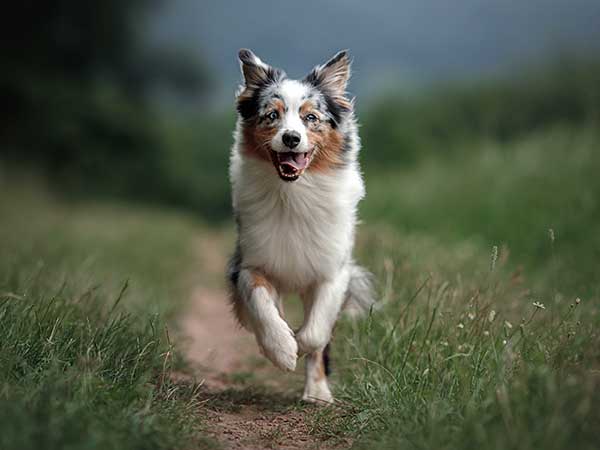
annaav / stock.adobe.com
Australian Shepherds respond best to rewards-based positive dog training approaches.
The first thing we realized was that Levi became territorial over our bed. We had a king sized bed and there was plenty of room for him to curl up on the corner. If I came into the bedroom after Levi had already claimed his spot (my spot) he would start getting nasty. Soon he tried to prevent me from even getting into the bedroom at all!
I've known some people who have encountered this kind of behavior with their dog and simply gotten rid of them. That is often not necessary. A little knowledge about dogs and the dynamics of dog pack heirarchy will solve the problem. I'd rather see people take the time to understand their Australian Shepherd. This is definitely preferable to the alternative.
Admittedly we had made some mistakes, but we recognized this was our doing. Levi was getting too big for his britches and needed to be firmly made aware of his real place in our little family pack. We used a few simple tricks to regain authority.
Keep in mind that this has nothing to do with dominating your dog. You want your dog to be your friend, someone she trusts and respects, and looks to willingly for guidance. Never use fear or intimidation, let alone physical punishment, or you will damage or even destroy your relationship with your dog. Besides, Australian Shepherds respond best to positive, rewards-based approaches to training, they love to learn, and are happiest when they have a firm, but kind, leader they respect and trust.
Quell An Aussie Uprising With Positive Dog Training Methods
Here's an Australian Shepherd Training Tip
If your Aussie starts laying in high traffic areas or blocking doorways she might be trying to dominate the space by forcing you to move around.
Make your dog move. Not by telling her to move or you will have to tell her every time. Just shuffle (you don't want to step on your dog, of course), until she gets out of the way. (So long as you can do this safely without getting bitten.)
This will train her that she has to remain alert to staying out of your way, instead of the other way around.
The first thing we did was take total control of the bedroom. Levi lost his privileges and was restricted to his own bed. We even closed the door to the room where his bed was so that I wouldn't "encounter" him during a trip to the bathroom at night.
In the dog hierarchy the "top dog" sleeps where he wants and others have to move around him. This is why Levi was so adamant that I not disturb him when he was on our bed. He saw this as a challenge to his perceived authority.
So once we had regained control of the bed again we could slowly introduce Levi to the concept that getting on the bed was a privilege that was under our total control. Permission to stay was totally dependent on his behavior and his recognition that we controlled this territory. Period!
We began by calling him up. Then after a little while, telling him to get down and praising his compliance. We would go for longer periods of allowing him up on the bed, watching for any signs of aggression. Once in a while I would shift positions and would touch Levi. If he gave me a dirty look (or dared to growl) he was instantly ordered off of the bed and lost his privileges for the rest of the day.
Aussies are very smart. Levi figured out the new rules with this training and was transformed within a week. Not only did he not growl or snap when I came into the bedroom but as soon as I entered the room he would automatically hop down from the bed and wait until I was settled and comfortable. He would then peek up and look to me for permission and would only then hop back up to find his own spot.
Some More Australian Shepherd Training Tricks
I should mention that at the same time we did a couple of other things to assert our authority. They were also very simple and seemingly small but they contributed to a dramatic effect.
When we gave Levi his food, rather than leaving food out in his bowl we gave him meals at certain times. We had him sit first, then we placed the bowl down. This is the important part - before he could eat he had to wait for our okay.
This let Levi know that his food came from us and didn't just magically appear. In canine social structures the top dogs control the food. Only after permission is given by the leader will the next in line eat and so on down the ranks. Before this Levi would just get food at his bowl or start eating as soon as the bowl was put down. Because he didn't have to look to anyone further up the rank for permission he thought he was in charge.
Similarly, when we let him go outside we would first have him sit. Then we would open the door and have him remain sitting until we gave permission for him to go out. Levi became a model Australian Shepherd. Training was the key.
These simple training methods worked a miracle. In only a week this training transformed Levi from an aggressive, even menacing, challenger to my authority to a friendly and contented dog. I was amazed at the difference. Levi actually seemed happy that the war was over and he gladly settled into his new rank in our pack. After all he could still lord it over the cats! :-)
If you are dealing with behavior issues with your Aussie, the ebook Guide To Australian Shepherd Training & Care is especially good for anyone looking for beginning to intermediate level information to help get them started.
Have Dog Training Questions?
Check out these introductory dog training videos...
I want my dog to stop being aggressive.
I want some help training my new puppy.
I want my dog to stop barking at everything.
Get Australian Shepherd Info, Website Updates, Special Offers, and Cartoons...
FREE GIFT
You'll also receive a free copy of the ebook
My Everyday Dog Training Tools
by professional dog trainer Daniel Abdelnoor, "Doggy Dan"
